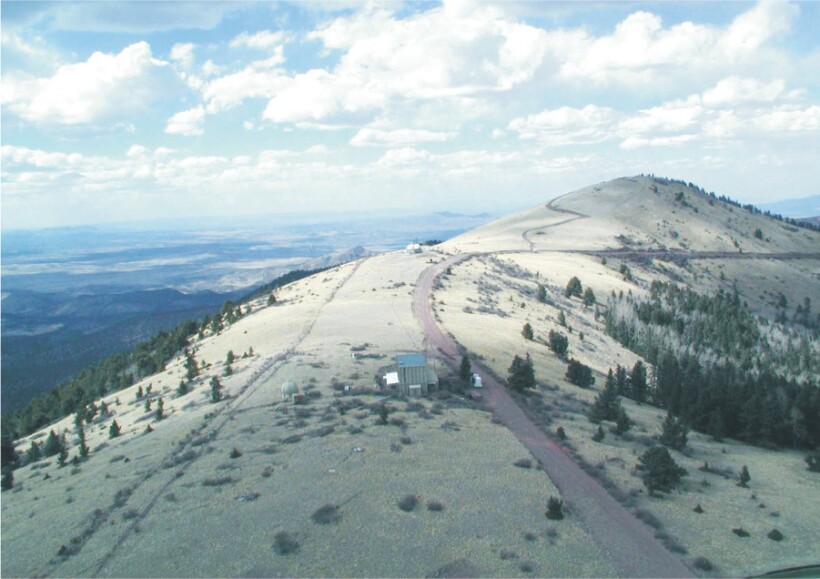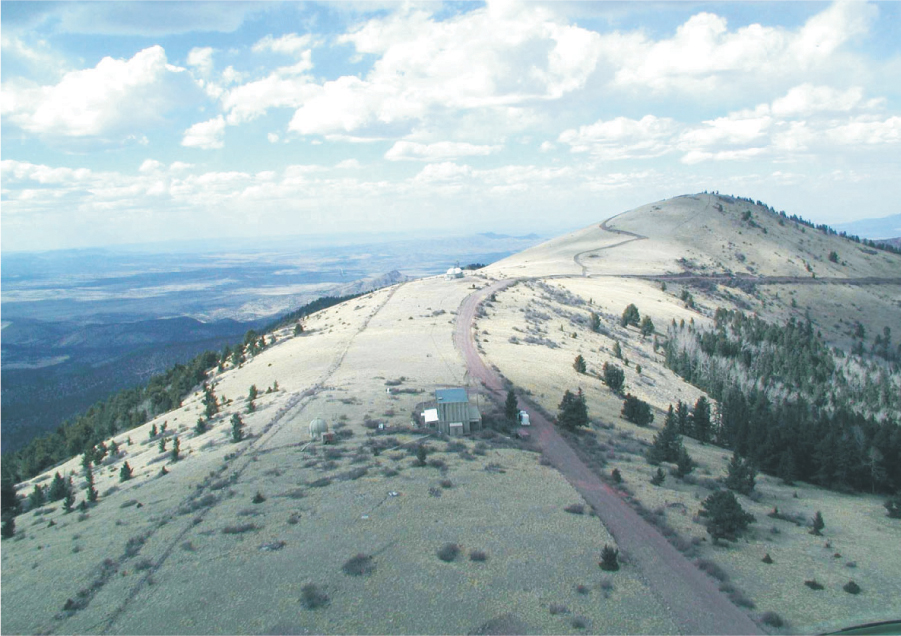New Mexico Plans Optical Interferometer and Fast-Slewing Telescope
DOI: 10.1063/1.1595046
How does a minor university land a major observatory? In New Mexico Tech’s case, it helped that the university has access to a high, dark site, that the Magdalena Ridge Observatory (MRO) will have national security applications, and that the project has allies in Congress.
“We had a coalition of universities looking for an observatory,” says Van Romero, vice president for research at New Mexico Tech (officially the New Mexico Institute of Mining and Technology), which has around 1800 students and 110 faculty members. New Mexico Tech and its partners—New Mexico State University, New Mexico Highlands University, and the University of Puerto Rico—learned that the US Army’s neighboring White Sands Missile Range wanted better missile tracking capability and the Air Force Research Laboratory in Albuquerque was interested in developing adaptive optics. “We seemed to have a critical mass—universities, along with more than one military user,” says Romero. Representative Joe Skeen and Senator Pete Domenici, both New Mexico Republicans, supported creating the MRO because the potential for education outreach, adaptive optics research, and world-class astronomy “all came together in a happy confluence of ideas,” says Stephen Traver, a legislative fellow in Domenici’s office who used to work for the now retired Skeen. Domenici led the way in winning a congressional markup for the $48 million observatory.
The observatory’s future home is on a ridge in the Magdalena mountains near Socorro, about 130 kilometers south of Albuquerque. Besides the clear skies and roughly 3200-meter-high perch, the site’s advantages include that it is near both White Sands and New Mexico Tech, it has room for the observatory to expand, and it has a road and other infrastructure already serving ecological and atmospheric studies and the university’s lightning lab (see box).
The MRO will consist of an optical–infrared interferometer with eight to ten 1.4-meter telescopes in a reconfigurable Y-shaped array up to 400 meters long plus a single 2.4-meter telescope. Groundbreaking is scheduled for 20 October.
Stars and scuds
The MRO array will have a larger number of bigger elements distributed over a wider range of baselines than any other optical interferometer in the works, says Chris Haniff, whose University of Cambridge group is involved in the project. MRO’s angular resolution, he adds, “will be a factor of a hundred higher than the Hubble Space Telescope. That means that for any class of astronomical object, you can see more detail.”
“One of the exciting things we think we will be able to do is to look at the central engines of active galactic nuclei,” says David Westpfahl, project scientist for the MRO interferometer. “All the models have a massive object at the center, such as a black hole, and an accretion disk and polar outflow, but the detailed shape and arrangement of these things are still being worked on. We hope to be able to resolve several of these objects and decide among the models.” The MRO interferometer will also be used to deduce the relative rotational axes of stars in clusters, which could shed light on the importance of turbulence in star formation, and to study other aspects of star birth, as well as star aging and planet formation.
Fast slewing is the special feature of MRO’s single telescope. It will be able to zip to a particular part of the sky at 10° per second. The slewing was initially incorporated to accommodate the US Army. The MRO offers a good look at target missiles fired from Fort Wingate in western New Mexico, says Tomas C. Chavez, chief of test technology at White Sands. “We could collect phenomenology data during the target’s boost and coast phases to help home in on the target with an interceptor.” Adds Romero, “This is a match made in heaven. The army wants to use [the telescope] during the day and early morning, we want to use it at night.” The 2.4-meter mirror was donated by the air force. Originally intended for classified space-based research, it has hardware added to keep it from sagging in Earth’s gravitational field.
Astronomers will take advantage of the fast slewing, too. “One big use of the telescope will be ‘alert response to transient astrophysical phenomena,’” says project scientist Eileen Ryan. “An example would be to find the optical counterpart of gamma-ray bursts.” For that, the telescope would automatically interrupt other observations when it receives signals from Swift, a satellite NASA is supposed to launch in December. The MRO telescope, Ryan adds, will be bigger and will slew faster than other ground-based telescopes currently hunting for GRBs (see Physics Today, July 2002, pages 24
Mostly, though, the 2.4-meter telescope will be devoted to studying “small Solar System bodies—asteroids, comets, and Kuiper Belt objects,” says Ryan. “We want to use the telescope to ask how fast asteroids are spinning. How big are they? What are their shapes?”
Possible with pork
What with the MRO being funded directly by Congress, the project often gets labeled as pork. Says Romero, “Without this type of funding, we would not be able to build it. But we think this is a facility that funding agencies like NASA and NSF will take the opportunity to fund research at.” And, unusual for a federally funded project, New Mexico Tech and its partners will foot the running costs, estimated at $2 million a year.
If all goes as planned, the single telescope would see first light in 2005, and the interferometer could be up and running a couple years later.

Magdalena ridge in New Mexico is the future site of a multipurpose observatory.
SEAWEST ENTERPRISES

More about the Authors
Toni Feder. American Center for Physics, One Physics Ellipse, College Park, Maryland 20740-3842, US . tfeder@aip.org
